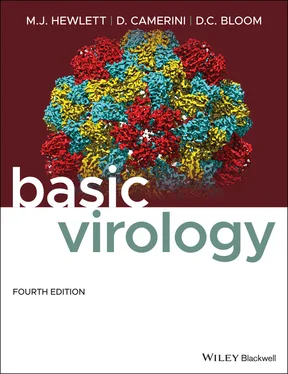479 501
480 503
481 504
482 505
483 506
484 507
485 509
486 510
487 511
488 512
489 513
490 514
491 515
492 516
493 517
494 518
495 519
496 520
497 521
498 522
499 523
500 524
501 525
502 526
503 527
504 528
505 529
506 530
507 531
508 532
509 533
510 534
511 535
512 536
513 537
514 538
515 539
516 540
517 541
518 542
519 543
520 544
521 545
522 546
523 547
524 548
525 533
In Memoriam
Edward K. Wagner
(May 4, 1940 to January 21, 2006)

It was one of those telephone calls that you do not want to receive. Each of us, that weekend in late January, heard of the untimely passing of our colleague, co‐author, collaborator, mentor, and friend, Ed Wagner. Ed will be remembered for his many contributions to the teaching of virology and for his research contributing to our understanding of the intricacies of the herpesviruses. From his graduate work at MIT, through his postdoctoral research at the University of Chicago, and on to his professorship at the University of California, Irvine, Ed was a passionate champion for the most rigorous and critical thinking and the most dedicated teaching, setting a standard for the discipline of virology. Beyond the laboratory and the classroom, Ed loved life to the fullest, with his family and friends. The last time we were together as a writing team, in the fall of 2005, we all remember an intense day of work in a conference room at UCI, followed by an evening of touring some of Ed’s favorite haunts in the Southern California coastal towns he called home. It is with those thoughts etched into our memories that we dedicate this edition of Basic Virology to Edward K. Wagner.
Fourth Edition
Martinez “Marty” Hewlett
University of New Mexico Taos, NM, USA
David Camerini
Center for Virus Research University of California, Irvine Irvine, CA, USA
David C. Bloom
Department of Molecular Genetics and Microbiology University of Florida Gainesville, FL, USA

This fourth edition first published 2021
© 2021 John Wiley & Sons, Inc.
Edition History:
1e; (1999, Wiley‐Blackwell) 2e; (2003, John Wiley & Sons), 3e; (2007, Wiley‐Blackwell).
All rights reserved. No part of this publication may be reproduced, stored in a retrieval system, or transmitted, in any form or by any means, electronic, mechanical, photocopying, recording or otherwise, except as permitted by law. Advice on how to obtain permission to reuse material from this title is available at http://www.wiley.com/go/permissions.
The right of Marty Hewlett, David Camerini, and David Bloom to be identified as the authors of this work has been asserted in accordance with law.
Registered Office
John Wiley & Sons, Inc., 111 River Street, Hoboken, NJ 07030, USA
Editorial Office Boschstr. 12, 69469 Weinheim, Germany
For details of our global editorial offices, customer services, and more information about Wiley products visit us at www.wiley.com.
Wiley also publishes its books in a variety of electronic formats and by print‐on‐demand. Some content that appears in standard print versions of this book may not be available in other formats.
Limit of Liability/Disclaimer of Warranty
While the publisher and authors have used their best efforts in preparing this work, they make no representations or warranties with respect to the accuracy or completeness of the contents of this work and specifically disclaim all warranties, including without limitation any implied warranties of merchantability or fitness for a particular purpose. No warranty may be created or extended by sales representatives, written sales materials or promotional statements for this work. The fact that an organization, website, or product is referred to in this work as a citation and/or potential source of further information does not mean that the publisher and authors endorse the information or services the organization, website, or product may provide or recommendations it may make. This work is sold with the understanding that the publisher is not engaged in rendering professional services. The advice and strategies contained herein may not be suitable for your situation. You should consult with a specialist where appropriate. Further, readers should be aware that websites listed in this work may have changed or disappeared between when this work was written and when it is read. Neither the publisher nor authors shall be liable for any loss of profit or any other commercial damages, including but not limited to special, incidental, consequential, or other damages.
Library of Congress Cataloging‐in‐Publication Data Names: Hewlett, Martinez “Marty”, author. | Camerini, David, author. | Bloom, David (David C.), author. Title: Basic virology / Marty Hewlett, David Camerini, David Bloom. Description: Fourth edition. | Hoboken, NJ: Wiley‐Blackwell, 2021. | Preceded by: Basic virology / Edward K. Wagner … [et al.]. 3rd ed. 2008. | Includes bibliographical references and index. Identifiers: LCCN 2020026463 (print) | LCCN 2020026464 (ebook) | ISBN 9781119314059 (paperback) | ISBN 9781119314042 (adobe pdf) | ISBN 9781119314066 (epub) Subjects: MESH: Virus Diseases–virology | Viruses–pathogenicity | Virus Replication | Genome, Viral Classification: LCC QR360 (print) | LCC QR360 (ebook) | NLM WC 500 | DDC 579.2–dc23 LC record available at https://lccn.loc.gov/2020026463LC ebook record available at https://lccn.loc.gov/2020026464
Cover Design: Wiley Blackwell
Cover Image: © Wah Chiu
Preface to the First Edition
Viruses have historically flickered in and out of the public consciousness. In the eight years since we finished the first edition of Basic Virology much has happened, both in the world and in virology, to fan the flames of this awareness.
In this period we have seen the development of a vaccine to protect women against human papilloma virus type 16. This major advance could well lead to a drastic reduction in the occurrence of cervical cancer. In addition, viruses as gene delivery vectors have increased the prospect of targeted treatments for a number of genetic diseases. The heightened awareness and importance of the epidemiological potential of viruses, in both natural and man‐caused outbreaks, have stimulated the search for both prophylactic and curative treatments.
However, the events of September 11, 2001, dramatically and tragically altered our perceptions. A new understanding of threat now pervades our public and private actions. In this new arena, viruses have taken center stage as the world prepares for the use of infectious agents such as smallpox in acts of bioterrorism.
Naturally occurring virological issues also continue to capture our attention. West Nile virus, originally limited to areas of North Africa and the Middle East, has utilized the modern transportation network to arrive in North America. Its rapid spread to virtually every state in the union has been both a public health nightmare and a vivid demonstration of the opportunism of infectious diseases. The continuing AIDS pandemic reminds us of the terrible cost of this opportunism. In addition, we are now faced with the very real prospect of the next pandemic strain of influenzas, perhaps derived from the avian H5N1 virus now circulating in wild and domestic birds.
Читать дальше














